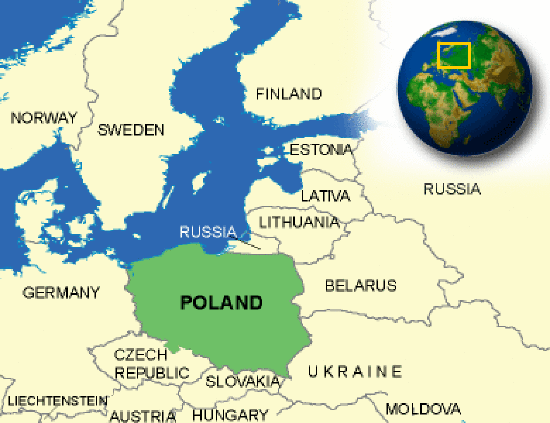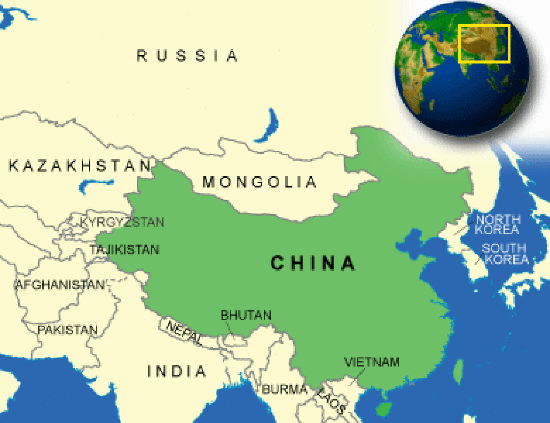9.4: Comparative Case Study - Workers’ movements in Poland and China
- Last updated
- Save as PDF
- Page ID
- 150478
Learning Objectives
By the end of this section, you will be able to:
- Apply components of social movement theory to two different worker-based social movements
Introduction
The 21sts century witnessed several labor movements, many of which were supported by the ideologies and theories of Karl Marx (1818-1883) regarding the divide between capitalists and workers. In this relationship, capitalists would exploit and squeeze as much labor out of workers for the lowest wages. Eventually, workers would realize the injustices of their situation, unite, and revolt. This action would lead to the creation of a socialist system characterized by economic redistribution. Then, the socialist state would evolve to become a stateless communist society of liberated labor.
In communist party-led states, labor unions are typically controlled by the communist party. Ironically, these workers have continued to organize and press for more rights and better working conditions. For example, in Poland, workers organized an underground free union movement known as Solidarność (hereafter referred to as Solidarity) that eventually toppled the ruling communist party. In China, blazing economic reforms and the advent of a market economy and private enterprise have spurred workers to organize for stronger protections in the workplace and a more secure social safety net. While some policy concessions have been made toward workers in China, the ruling Chinese Communist Party remains firmly in control.
As this comparative case study will show, the labor movements in each country have yielded very different outcomes. While Poland’s Solidarity movement was the spark for opposition to eventually overturn communist party rule, China workers’ protests have remained on the fringes.
Solidarity in Poland
From 1952 to 1989, Poland was under communist party rule, and part of the so-called Eastern Bloc. A mid-sized country located in central Europe, Poland neighbors Russia and many republics of the former Soviet Union (USSR), as well as the Baltic Sea to the north. Its capital is centrally located in Warsaw.
- Full Country Name: Republic of Poland
- Head(s) of State: President, Prime Minister
- Government: Unitary Parliamentary Republic
- Official Languages: Polish
- Economic System: Mixed Economy
- Location: Central Europe
- Capital: Warsaw
- Total land size: 120,733 sq miles
- Population: 38,179,800
- GDP: $720 billion
- GDP per capita: $19,056
- Currency: Zloty
Source: Country Report
Beginning in 1970, workers organized protests in Poland. In 1980, a model shipyard worker from the Gdańsk shipyard was dismissed for engaging in free union organizing in the shipyards. This action triggered a major strike. Under communist rule, all unions were managed by the ruling party and free unions were forbidden. In response to Anna Walentynowicz's dismissal, more workers organized, calling for higher wages to offset the rising cost of basic foodstuffs in the state-controlled markets. Eventually, workers also demanded the right to form free trade unions with the right to strike.
These protests came at a time of political opportunity. Poland’s economic situation was deteriorating, which placed communist party officials in a difficult situation. Gradually, the protests spread nationally, which required a national-level response from the Polish communist party. The movement gained momentum, and for the first time in communist Poland’s history, protesters were allowed to negotiate directly with communist officials in the Gdańsk shipyards. The workers’ leader, an electrician named Lech Wałęsa, met with communist party negotiators, and the subsequent agreement led to the recognition of the Solidarity trade union by the government.
Together with other opposition groups, Solidarity organized protests throughout the country for better working conditions and, eventually, political liberalization. At its height, 80 percent of state employees joined Solidarity. The movement's popularity led Polish officials to declare martial law in 1981, and hundreds of Solidarity members were arrested. Within years, amnesty was declared and political prisoners were released.
During the 1980s, Solidarity led a non-violent movement that was robust in its organization and mobilizational capacity. Members and sympathizers could draw on a rich repertoire of non-violent tactics of civil resistance, including “protests; leaflets; flags; vigils; symbolic funerals; catholic masses; protest painting; parades; marches; slow-downs; strikes; hunger strikes; ‘Polish strikes’ in the mine shafts; underground socio-cultural institutions: radio, music, films, satire, humor; over 400 underground magazines with millions of copies distributed, including literature on how to scheme, strike, and protest; alternative education and libraries; a dense network of alternative teaching in social science and humanities; commemorations of forbidden anniversaries; and internationalization of Solidarity struggle,” (Bartkowski 2009).
In addition, the social movement was framed in terms of human rights, with an emphasis on dignity for those groups traditionally championed by communist ideology: workers, peasants, and the downtrodden. This resonated with international supporters such as the Catholic Church’s Pope John Paul II, who was Polish and brought moral authority to the movement’s call for human rights and freedom of conscience. The geopolitics of the Cold War were also operative during this time, with the United States supporting the Polish opposition out of an interest in creating fissures in the Soviet Bloc.
From February to April 1989, the Polish political opposition, including Solidarity leaders such as Lech Wałęsa, sat down opposite communist party leaders for a series of negotiations. These resulted in the institution of democratic elections in Poland and other major economic and political reforms. That same year, communist rule was overturned with the election of Wałęsa to the Polish presidency in free and fair elections.
Fragmented labor in China
Source: Country Report
China has been under the rule of the Chinese Communist Party (CCP) since 1949. The country’s capital is Beijing, located in the northeast. However, economic gravity is near the wealthy urban centers of its eastern coastal region, which includes cities such as Shanghai, Shenzhen, and Guangzhou. The country's western flank includes the Himalayan highlands of Tibet and western deserts of Xinjiang, both gateways to the larger Eurasian landmass. Today, the CCP rules over a vast and complex country of over 1 billion, of which hundreds of millions constitute its national workforce.
While the Soviet Union and many other communist party-led states collapsed between 1989 to 1991, the CCP remained firmly in control of the Chinese state. The CCP did not emerge from this period unscathed. Major protests erupted nationwide in 1989, with popular calls for the liberalization of the political system. At the heart of this national movement was a student-led nonviolent protest in Tiananmen Square in Beijing. The Tiananmen protests and the nationwide movement were violently suppressed in June 1989 when CCP leaders ordered the party's army, the People's Liberation Army (PLA), to clear demonstrators from public spaces.
Similar to other communist party systems, free unions in China are not allowed. Instead, workers are represented through trade unions that fall under the CCP’s United Front. These bargaining units are subsumed within the state structure, which implies that workers do not have an independent means to organize for their rights outside of official channels.
Beginning in 1978, China embarked on a massive “reform and opening” program which entailed liberalizing the economy -- i.e., moving away from a command economy based on economic planning -- and opening up to global trade. These reforms have generated tremendous national economic growth, on the order of over nine percent annually during the period 1978 to 2020. As a result, the employment landscape for workers has changed. Specifically, the danwei system (work unit) no longer provides workers with the security and material benefits that they once enjoyed.
Workers were particularly restive from 2008 to 2012. For example, workers decided to strike at the Honda car factory in Guangdong province, which led to wage increases for workers. In addition, labor shortage, new labor laws, and greater media openness provided an opening for organized labor to press for gains. The Labor Contract Law provides a legal basis for a 40-hour week, payment of wages, and paid leave. Enforcement remains a perennial challenge, which provides the basis for more worker protests.
In response to the repressive capacity of the Chinese state, protesters have framed resistance in terms of rights accorded them by the law. Such “rightful resistance,” which has roots in rural China, draws on notions of justice that citizens should be entitled to in a society governed by laws (O’Brien and Li 2006). This legalistic appeal has deep roots in China, where the philosophical tradition of legalism (fajia) dates to the first millennium BCE.
In terms of organization and mobilization, there do not exist free labor unions in China, nor are workers organized under the banner of a non-state organization with national reach. There is no Chinese equivalent to Solidarity. Internationally, there is limited support for workers’ rights in China due in part to laws that restrict the operation of foreign nongovernmental organizations within the country. Because of these various factors, the labor movement within China remains fragmented and decentralized, with protests breaking out in localities but no overarching national labor movement.
Comparative analysis
These case studies of labor movements across two communist party-led countries illustrate the power of two key factors, political opportunity, and broader organizational networks.
- Both labor movements framed their endeavors in terms of justice and dignity for the working class, which resonates with the dominant communist ideology in both countries.
- The political opportunity structure varied significantly across Poland and China.
- In Poland, there was an opening for government leadership to compromise with labor leaders, especially as the economy weakened.
- By comparison in China, robust economic growth has supported the position of the CCP, which is to remain adamant in its state-organized union structure.
- There are also stark differences in organizational capacity.
- Chinese labor organizers have not had anything equivalent to the momentum enjoyed by Poland’s Solidarity in the 1980s, which could mobilize over three-quarters of its workers in a variety of non-violent actions.



